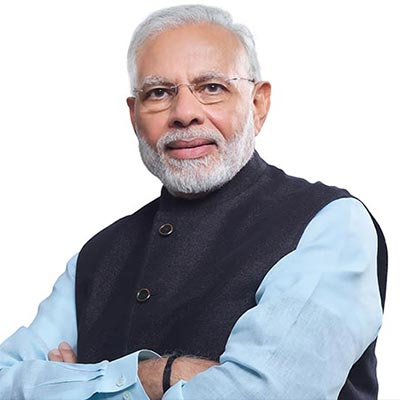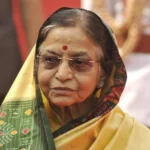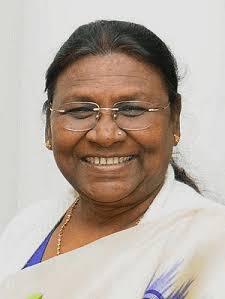Narendra Modi, the 14th Prime Minister of India, is a charismatic and visionary leader who has made a significant impact on the country’s political landscape. Born on September 17, 1950, in Vadnagar, Gujarat, Modi’s journey from being a tea-seller to a prominent political figure is nothing short of inspiring. This article delves into the life, achievements, and political career of Narendra Modi, shedding light on his transformative initiatives, foreign policies, and the key challenges he has faced.

Early Life and Rise to Power:
Modi’s childhood was marked by humble beginnings and a strong work ethic. He joined the Rashtriya Swayamsevak Sangh (RSS), a Hindu nationalist organization, during his early years, which laid the foundation for his political aspirations. Modi rose through the ranks of the Bharatiya Janata Party (BJP) and became the Chief Minister of Gujarat in 2001, showcasing his administrative acumen and leadership skills.
Transformative Initiatives and Reforms:
As Prime Minister, Modi has launched several transformative initiatives aimed at improving the lives of Indian citizens. One of his most notable achievements is the implementation of the Goods and Services Tax (GST), which unified India’s complex tax structure into a single, streamlined system. Additionally, the Pradhan Mantri Jan Dhan Yojana, Make in India, Swachh Bharat Abhiyan, and Digital India campaigns have focused on financial inclusion, economic growth, cleanliness, and digital empowerment, respectively.
Foreign Policy and Global Influence:
Modi’s foreign policy has been instrumental in raising India’s profile on the global stage. He has actively engaged with world leaders, fostering strong diplomatic ties and promoting India’s interests. Notably, the “Act East” policy has strengthened India’s relations with countries in Southeast Asia, while the “Neighborhood First” policy aims to enhance cooperation with neighboring nations. Modi’s dynamic approach and ability to strike a balance between domestic and international priorities have positioned India as a significant player in global affairs.
Challenges and Criticisms:
Despite his achievements, Modi’s tenure has not been without challenges and criticisms. The implementation of demonetization in 2016, aimed at combating black money and corruption, faced criticism due to its disruptive impact on the economy. The handling of certain social and religious tensions has also drawn scrutiny. However, Modi’s supporters argue that these decisions were bold and necessary for the long-term development and progress of the nation.
Summary:
Narendra Modi, the 14th Prime Minister of India, is a dynamic and visionary leader who has transformed the country’s political landscape. From his humble beginnings as a tea-seller to the helm of the nation, Modi’s journey is truly inspiring. He has launched transformative initiatives like GST, focused on economic growth, and pursued a proactive foreign policy to raise India’s global stature. Despite challenges and criticisms, his leadership has left an indelible mark on India’s development. With his bold vision and determination, Modi continues to shape the nation’s trajectory and inspire millions.
Narendra Modi’s leadership has left an indelible mark on India’s political landscape. His transformative initiatives, focus on economic growth, and proactive foreign policies have propelled India towards becoming a global powerhouse. While facing challenges and criticisms along the way, Modi’s vision and determination continue to inspire millions. As India moves forward, the impact of Modi’s leadership will undoubtedly shape the nation’s trajectory and leave a lasting legacy.
Frequently Asked Questions about Narendra Modi
- Who is Narendra Modi? Narendra Modi is an Indian politician who currently serves as the Prime Minister of India. He has been in office since May 2014 and is a member of the Bharatiya Janata Party (BJP).
- When was Narendra Modi born? Narendra Modi was born on September 17, 1950, in Vadnagar, Gujarat, India.
- What is Narendra Modi’s educational background? Narendra Modi completed his higher secondary education in Vadnagar and later obtained a Bachelor’s degree in Political Science from the University of Delhi. He also has a Master’s degree in Political Science from Gujarat University.
- What positions has Narendra Modi held before becoming Prime Minister? Prior to becoming the Prime Minister of India, Narendra Modi served as the Chief Minister of Gujarat from 2001 to 2014. He held several important portfolios in the Gujarat state government before assuming the role of Chief Minister.
- What are some of Narendra Modi’s notable achievements as Prime Minister? As Prime Minister, Narendra Modi has implemented various initiatives and policies aimed at promoting economic growth, infrastructure development, and social welfare. Some notable achievements include the implementation of the Goods and Services Tax (GST), the Swachh Bharat Abhiyan (Clean India Campaign), and the Pradhan Mantri Jan Dhan Yojana (Financial Inclusion Program).
- What is Narendra Modi’s foreign policy approach? Narendra Modi’s foreign policy approach is focused on promoting India’s global standing and fostering strong diplomatic relations with other countries. He has emphasized the “Neighborhood First” policy, strengthening ties with neighboring nations, and has actively engaged in international diplomacy, including bilateral visits and participation in multilateral forums.
- What is the “Make in India” campaign initiated by Narendra Modi? The “Make in India” campaign is an initiative launched by Narendra Modi to encourage domestic and foreign companies to invest in India and promote the manufacturing sector. The campaign aims to boost job creation, enhance skill development, and facilitate ease of doing business in India.
- What is Narendra Modi’s stance on climate change and renewable energy? Narendra Modi has expressed a strong commitment to addressing climate change and promoting renewable energy. Under his leadership, India has set ambitious renewable energy targets and has taken initiatives such as the International Solar Alliance to promote clean energy adoption globally.
- What is Narendra Modi’s vision for Digital India? Narendra Modi envisions a digitally empowered India where technology is leveraged to enhance governance, improve public service delivery, and promote digital literacy. The Digital India initiative aims to connect rural areas with high-speed internet, promote e-governance, and bridge the digital divide.
- What are some of the major economic reforms undertaken by Narendra Modi’s government? The Narendra Modi government has implemented significant economic reforms, including the introduction of the Goods and Services Tax (GST), the Insolvency and Bankruptcy Code, and measures to improve ease of doing business. The government has also focused on attracting foreign direct investment, promoting entrepreneurship, and encouraging digital payments through initiatives like demonetization and the Digital India campaign.
You would also love to read the biography of President Draupadi Murmu.
DRAUPADI MURMU: THE FIRST TRIBAL WOMAN PRESIDENT OF INDIA
Resources:






Pingback: 18 Points How To Become An IAS Officer: Chasing Dreams And Inspiring Change - Thesrkblogs.in